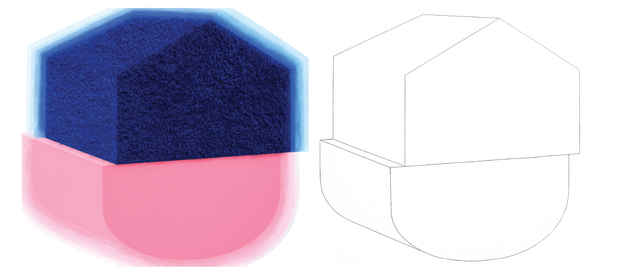Osi Audu "Ile Ori/Ori Ile (House of the Head/Head of the House)"
Skoto Gallery

This event has ended.
Skoto Gallery presents Ile Ori/Ori Ile (House of the Head/Head of the House), an exhibition of drawings and paintings by Osi Audu. Born in Nigeria, the artist was educated in that country and the United States. For over a decade now, he has maintained a strong professional presence in Korea, Japan, Great Britain, United States, Italy, Germany, Austria and Africa through highly acclaimed exhibitions of his paintings. His work is in several private and public collections including The British Museum; The Horniman Museum, London; Schmidt Bank, Bayreuth, Germany; The Wellcome Trust, London, The National Museum of African Art, Smithsonian Institution, Washington DC and Newark Museum, Newark, New Jersey.
This is his second solo exhibition at the gallery.
ORÍ ÒDE/ORÍ INÚ: Metaphysics of the Head in Osi Audu’s Art:
The images in the exhibition convey much more than meet the eye. For, notwithstanding their modernistic aspects, they have been inspired by the Yoruba notion of the self as an interface of spirit and matter, the one empowering the other in the natural world. The head (orí) dominates a typical Yoruba representation of that self for two main reasons. The first has to do with its biological significance as the seat of the brain, which coordinates the activities of the body, and the second, with the belief that the physical head—a site of identity, perception and communication—is no more than the outer shell (orí òde) of an inner/invisible head (orí inú), which localizes àse, the enabling power that sustains the cosmos and determines the personality as well as destiny of an indivi dual. Little wonder that, in the past, many Yoruba dedicated an altar to the inner head (orí inú) for the purpose of harnessing its àse to cope with the existential struggle. This cone-shaped altar (ìborí) was kept inside a container called ilé ori (house of the head). Thus, to the Yoruba, succeeding in life depends, for the most part, on how well you are able to make good use of your head through a variety of processes involving the objective and subjective; the cultural, social, economic, political and spiritual; the technical and artistic, among others.
By employing highly conceptual imagery, Osi Audu hints at the empirical and metempirical dimensions of reality, in addition to stressing the role of the head (the location of the eyes) in its perception and interpretation. His Outer/Inner Head [Orí Òde/Orí Inú], #2, 2011 is a good example. Here, the artist combines minimalist geometric and organic forms with achromatic and contrasting colors to further underscore the interplay of the conscious, subconscious and superconsious in experiential responses, thereby obliging the viewer to look beyond the surface for deeper meanings. As a result, House of the Head [Ilé Orí], 1998, ushers the viewer into a dreamscape of sound and silence, remembering and forgetting, the exoteric and esoteric, the time-bound and timeless&m dash;all implicated in the human attempts to make better sense of the heard and unheard, the seen and unseen as well as the actual and virtual. Note the white cone in the middle. It recalls the shape of many Yoruba altars to the inner head (ìborí) and the configuration of an adé, the beaded crown of a Yoruba king (oba), thus stressing the apical location of the head on the human body. In effect, the head is to the self, what a king is to a kingdom and God (Olórun) to the universe--a source of power. This phenomenon also resonates in Osi Audu’s Ilé Orí/Orí Ile [House of the Head/Head of the House], 2011, which invokes the prominent gable roof (kòbì) that often distinguishes the entrance of a Yoruba palace (àfin), identifying the king as the head of the body politic with special powers to provide good leadership.
So it is that the art of Osi Audu conceals and reveals layers of meanings. Apart from exploring ancient and contemporary concepts and aesthetics, it relates brain and mind, body and soul, and the past to the present, offering food for thought and a mirror for self-reflection.
Babatunde Lawal, 2011
Art Historian Virginia Commonwealth University, Richmond, Virginia.
[Image: Osi Audu "Ile Ori/Ori Ile II" (2011), acrylic, wool and graphite on canvas, diptych, 54x60 in. each panel]
Media
Schedule
from October 20, 2011 to November 26, 2011